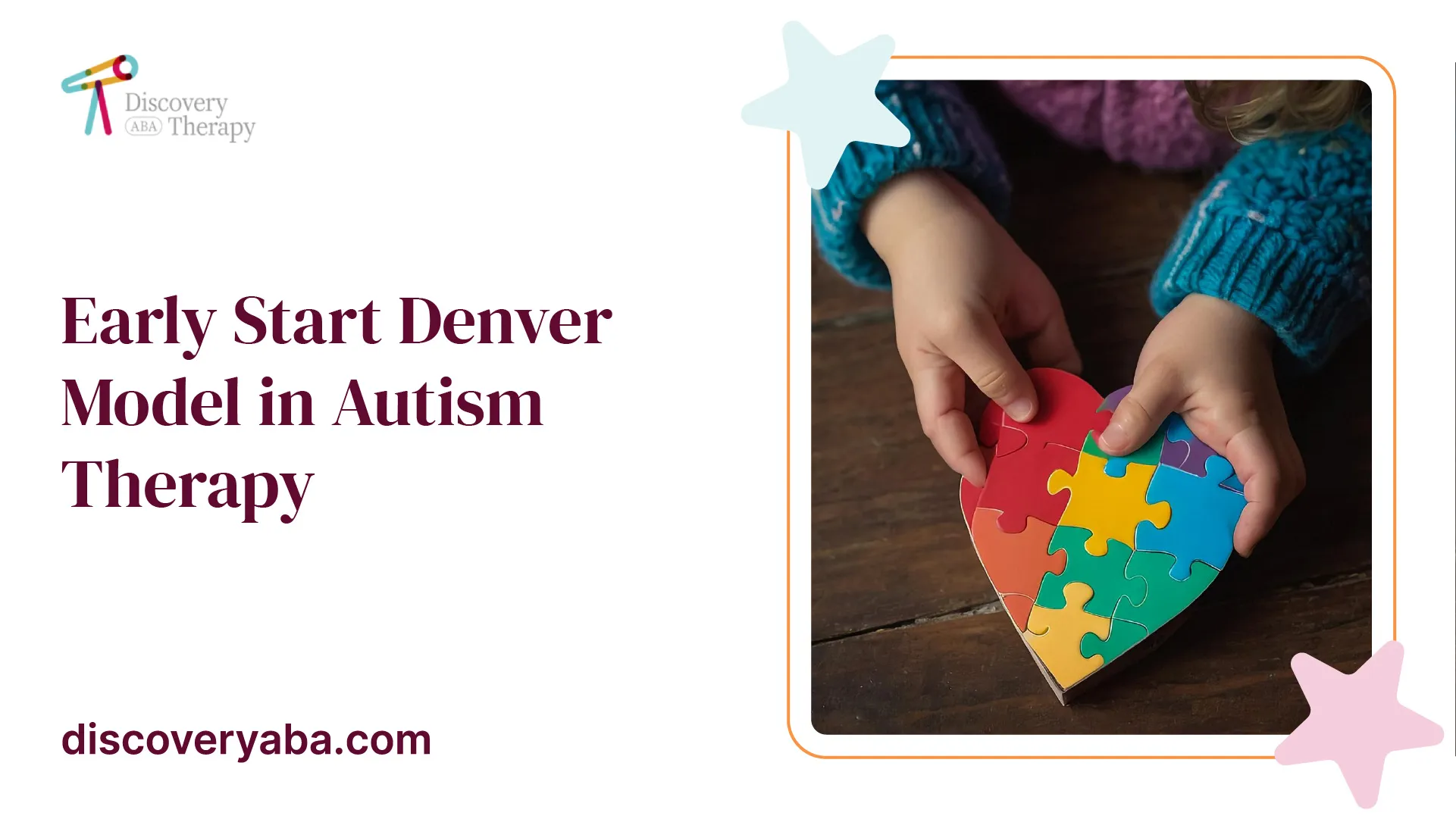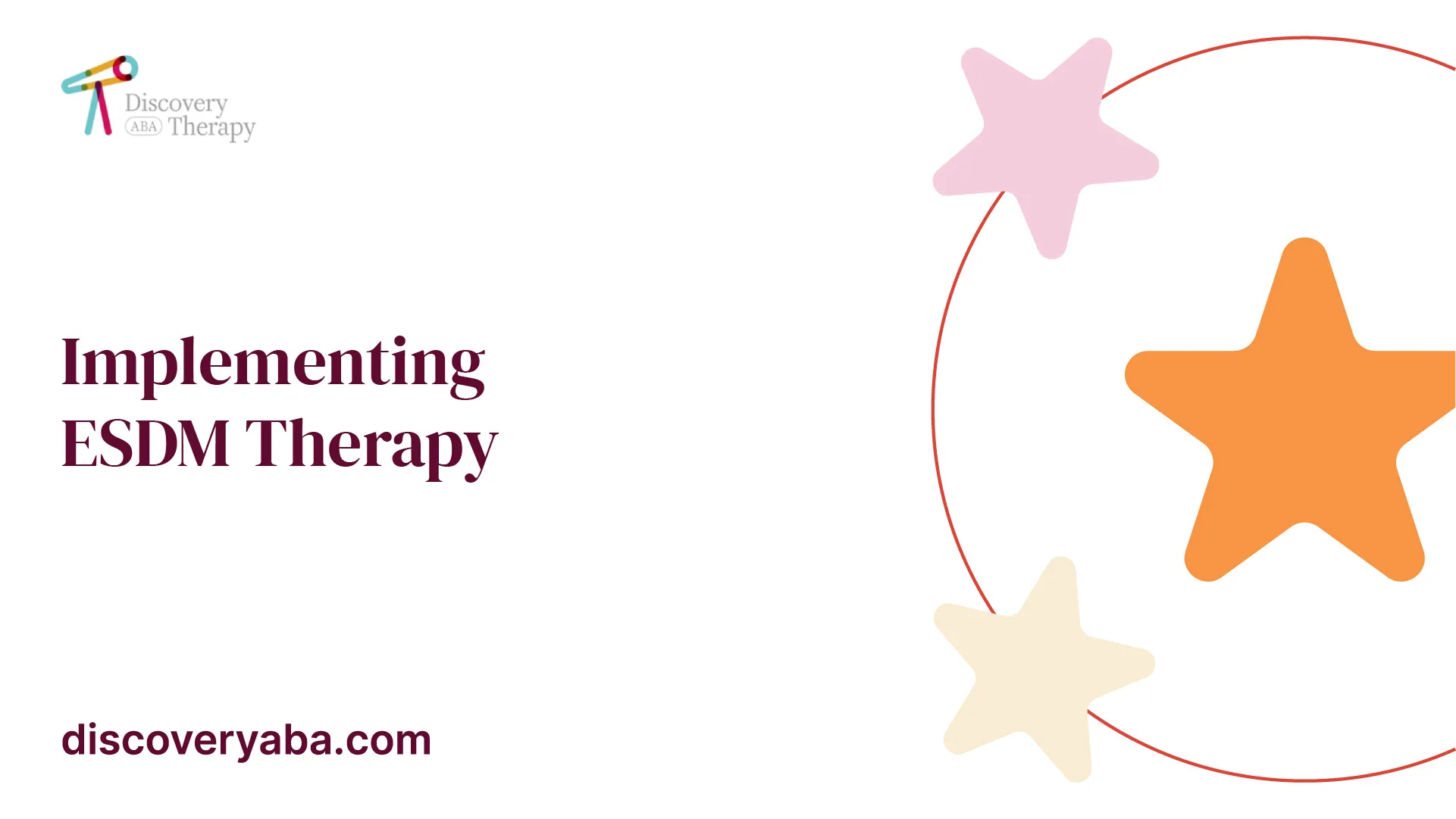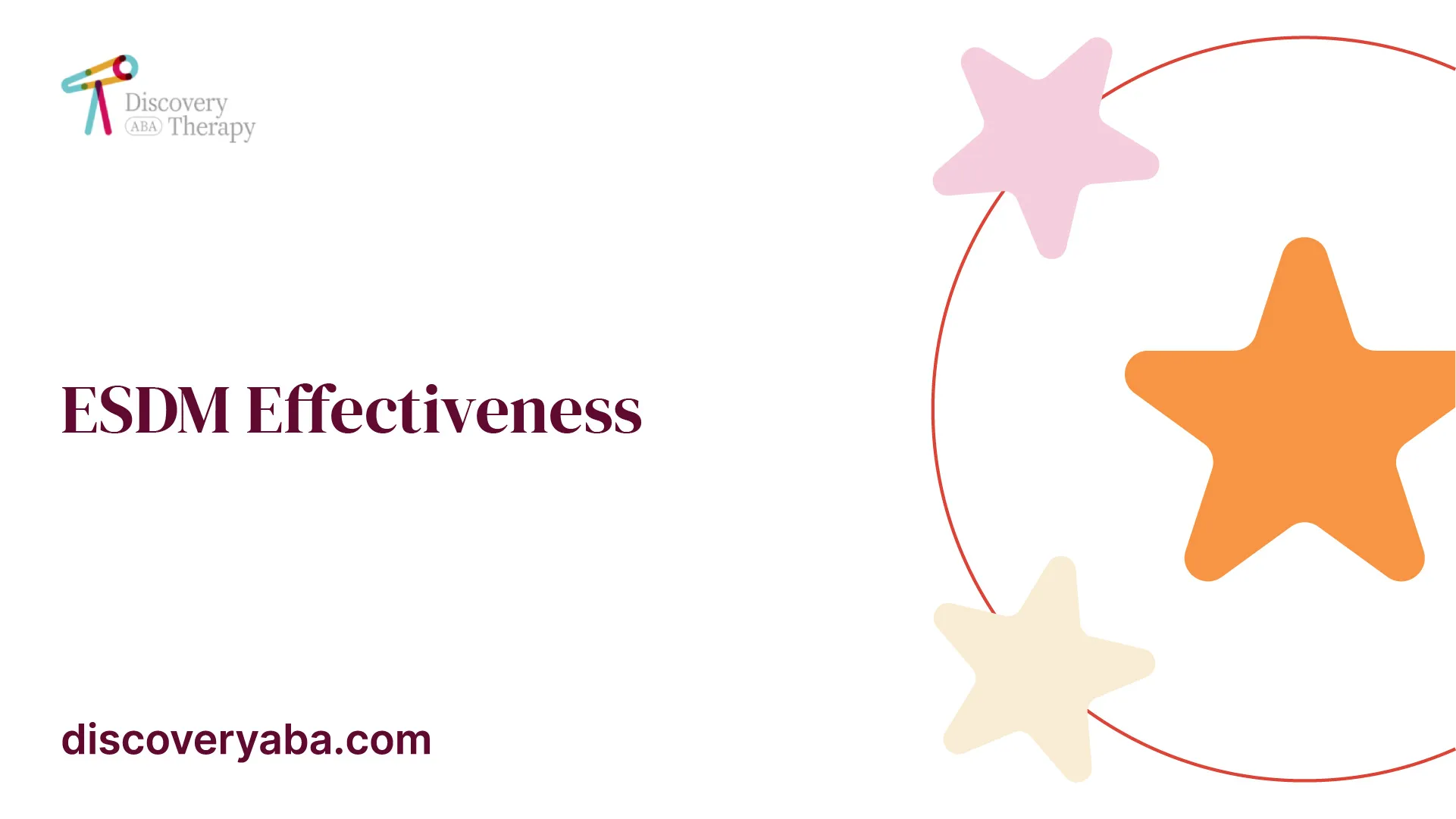Early Start Denver Model in Autism Therapy
Unlocking the potential of early start Denver model in autism therapy. Discover the groundbreaking benefits and research behind ESDM!


Benefits of ESDM Therapy
Early Start Denver Model (ESDM) therapy has proven to be a highly effective intervention for children with autism. This therapy focuses on enhancing various aspects of a child's development, including learning abilities and language skills. Let's explore these benefits in more detail.
Improved Learning Abilities
ESDM therapy has been extensively studied and has consistently demonstrated positive outcomes in improving learning abilities among children with autism. Over a dozen studies have shown the benefits of ESDM as an early intervention for children as young as 18 months, across a wide range of learning abilities [1].
Children who receive the ESDM intervention have shown greater gains in IQ, language skills, adaptive behavior, and social skills compared to children who receive other interventions. This early intervention approach aims to provide children with the necessary skills to thrive and reach their full potential.
Enhanced Language Skills
Language development is a crucial aspect of a child's growth, and ESDM therapy has proven to be effective in enhancing language skills among children with autism. The therapy utilizes play and positive relationships with parents and therapists to foster language development.
Studies have shown that children who undergo ESDM therapy make significant improvements in their language abilities, including expressive and receptive language skills. This intervention supports children in developing their communication skills, enabling them to better express their thoughts, needs, and emotions. The positive outcomes of ESDM therapy extend beyond language skills, as it also contributes to improved social-communicative functioning [2].
By focusing on improving learning abilities and enhancing language skills, ESDM therapy offers children with autism the opportunity to develop essential foundations for their overall development. It is important to note that the effectiveness of ESDM therapy is not limited to these two benefits alone. This comprehensive intervention has been shown to have positive effects on adaptive behavior, reducing symptoms of autism, and improving brain activity associated with social and communication skills [1].
Implementing ESDM Therapy

Implementing the Early Start Denver Model (ESDM) therapy involves creating a supportive environment that maximizes the potential for learning and growth in children with autism. This section explores the different therapy settings and highlights the importance of parent involvement in the ESDM program.
Therapy Settings
ESDM therapy can be implemented in various settings, including at home, at a clinic, or in school. The flexibility of the ESDM approach allows for individualized treatment plans that can be tailored to meet the unique needs of each child.
Therapy can be provided in both group settings and one-on-one sessions. Group settings offer opportunities for social interactions and peer learning, while one-on-one sessions allow for focused attention and individualized instruction. The choice of therapy setting depends on the child's specific requirements and goals.
It's important to note that ESDM therapy follows a child-centered approach, where the child's interests and preferences guide the therapy sessions. This child-led approach fosters engagement and motivation, enhancing the overall effectiveness of the therapy.
Importance of Parent Involvement
Parent involvement is a fundamental aspect of the ESDM program. Parents play a vital role in supporting their child's progress and generalization of skills beyond therapy sessions. Therapists should explain and model the strategies they use so that families can practice them at home. This collaboration between therapists and parents helps create a consistent and supportive environment for the child's development and learning.
By actively involving parents in the therapy process, ESDM aims to empower parents to become effective teachers for their child. This involvement not only strengthens the parent-child bond but also facilitates the generalization of skills across different settings and contexts.
Furthermore, parents are encouraged to participate in training sessions to learn various techniques and strategies used in ESDM therapy. This enables them to implement these techniques effectively and confidently in their daily interactions with their child.
The warm tone of voice, facial expression, and body language emphasized in ESDM interactions help build relationships and attachment with the child. Positive affect and reinforcement are provided throughout the therapy process, focusing on the child's enjoyment and motivation in playing and learning. Parent involvement ensures that these positive interactions extend beyond therapy sessions, creating a nurturing and supportive environment for the child's overall development.
In summary, ESDM therapy can be implemented in various settings to provide individualized support to children with autism. Parent involvement is a crucial component of the program, as it helps reinforce and generalize skills beyond therapy sessions. By actively engaging parents and providing them with the necessary tools and knowledge, ESDM empowers families to play an integral role in their child's progress and well-being.
Training and Certification
To provide Early Start Denver Model (ESDM) therapy, therapists must meet specific training and certification requirements. This ensures that certified professionals have the necessary knowledge and skills to effectively implement the ESDM teaching strategies with children with autism [1]. Let's explore the therapist requirements and the importance of certification.
Therapist Requirements
Therapists who offer ESDM services are required to undergo specialized training to acquire the skills needed to implement the model effectively. This training typically covers the principles and techniques of ESDM, including the use of operant conditioning principles and behavioral strategies derived from pivotal response training (PRT).
During training, therapists learn how to set measurable learning objectives based on a comprehensive assessment of the child's behavioral repertoire. They also learn to develop individualized treatment plans that incorporate daily routines in natural settings. This approach ensures that the target behaviors are observed across people, tasks, and environments, promoting generalization of skills.
Certification Importance
Obtaining certification in ESDM is important for therapists who wish to provide this evidence-based therapy to individuals with autism. Certification serves as a validation of the therapist's expertise and ensures that they have acquired the necessary skills and knowledge to implement the ESDM effectively.
Certification provides several benefits, including:
- Quality Assurance: Certified therapists have undergone rigorous training and assessment, ensuring that they adhere to the highest standards of practice. This helps to maintain the quality and integrity of ESDM therapy.
- Consistency: Certification establishes a standardized approach to implementing the ESDM, promoting consistency in therapy delivery. This consistency allows for better collaboration and communication among therapists, families, and other professionals involved in the child's care.
- Confidence and Trust: Certification instills confidence in both families and professionals seeking ESDM therapy. Knowing that a therapist is certified provides reassurance that they have the necessary expertise to support individuals with autism effectively.
- Continued Professional Development: Certification often requires therapists to engage in ongoing professional development, staying up-to-date with the latest research and best practices in ESDM therapy. This commitment to lifelong learning ensures that therapists continue to deliver high-quality care.
By completing the required training and obtaining certification, therapists demonstrate their dedication to supporting individuals with autism using the ESDM approach. This commitment to ongoing learning and professional development plays a vital role in promoting positive outcomes for children and families receiving ESDM therapy.
In the next section, we will explore the effectiveness of ESDM therapy, including its impact on diverse learning styles and the development of social, language, and cognitive skills.
ESDM Effectiveness

The Early Start Denver Model (ESDM) therapy has shown to be effective for children with autism spectrum disorder (ASD) in improving their diverse learning styles, as well as their social, language, and cognitive skills.
Diverse Learning Styles
ESDM therapy can be utilized in various settings, including at home, in clinics, or at school. It caters to children with a wide range of learning styles and abilities, ensuring that each child receives individualized support and guidance. This allows children, regardless of their learning challenges, to benefit from ESDM therapy to the fullest extent. The model focuses on providing children with the necessary skills to thrive and reach their full potential.
Social, Language, and Cognitive Skills
Numerous studies have demonstrated the positive impact of ESDM therapy on the development of social, language, and cognitive skills in children with ASD. Children who receive ESDM intervention have shown significant improvements in cognition, language abilities, and social-communicative functioning.
Specifically, research has revealed that children who undergo ESDM therapy exhibit enhanced cognitive abilities and language skills, including increased vocabulary, improved expressive and receptive language, and enhanced problem-solving skills. These improvements provide children with a solid foundation for future academic and social success.
A meta-analysis involving 640 children with ASD demonstrated that participants who received ESDM intervention showed significant improvements in cognition and language compared to control groups. These improvements were evident in IQ, receptive and expressive language, and overall cognitive functioning [2]. The ESDM has consistently shown positive outcomes in improving autism symptoms, cognitive and language abilities, and social-communicative functioning.
The effectiveness of ESDM therapy highlights its valuable role in supporting children with autism in their journey towards reaching their full potential. By addressing diverse learning styles and focusing on social, language, and cognitive skills development, ESDM therapy provides a comprehensive approach to support the unique needs of each child.
Research Studies on ESDM
The Early Start Denver Model (ESDM) has been the subject of several research studies, aiming to evaluate its efficacy and impact on individuals with autism. These studies provide valuable insights into the effectiveness of ESDM therapy and its potential benefits.
Brain Activity Improvement
Research using brain scans has shown promising results in terms of brain activity improvement with the implementation of ESDM therapy. Studies suggest that ESDM enhances brain activity associated with social and communication skills [1]. Changes in brain wave tests, such as electroencephalograms (EEG), have been observed when individuals with autism view faces and objects. These changes indicate the positive impact of ESDM on neural responses and connectivity, supporting the effectiveness of the model in autism therapy.
Clinical Efficacy
Numerous studies have demonstrated the clinical efficacy of ESDM therapy. In a study conducted in Japan, young children with autism received ESDM intervention for an average duration of 8.0±2.6 months. The results showed significant improvements in language and social developmental quotient, as measured by the Kyoto Scale of Psychological Development (K-test). Additionally, there were significant reductions in maladaptive behavior, assessed by the Aberrant Behavior Checklist-Japanese version (ABC-J) and the Clinical Global Impression-Severity scale (CGI-S) [6].
The study findings indicate that ESDM intervention can have a positive impact on various aspects of autism. The therapy has been shown to reduce the severity of social communication and interaction deficits, as well as maladaptive behaviors commonly associated with autism. These outcomes highlight the effectiveness of ESDM in addressing core symptoms and improving overall functioning in children with autism.
The research studies on ESDM provide compelling evidence of its effectiveness in improving brain activity associated with social and communication skills. Additionally, the clinical efficacy of ESDM therapy is supported by its positive impact on language abilities, adaptive behavior, and symptom reduction in individuals with autism. These findings contribute to the growing body of knowledge surrounding ESDM and its potential as an effective intervention for autism.
Cost and Coverage
When considering the Early Start Denver Model (ESDM) for autism therapy, it's important to understand the cost and coverage options available. The cost of ESDM therapy can vary depending on factors such as the provider and the number of hours each week that children spend in the program. However, there are options for financial assistance and coverage to help make ESDM therapy more accessible to families.
Medicaid and Insurance
Medicaid plans are required to cover treatments deemed medically necessary for children under 21, including ESDM if recommended by a doctor. The coverage provided by private health insurance for ESDM may vary depending on the type of insurance and the state of residence. It's essential to check with your insurance provider to understand the specific coverage options available to you. Medicaid and private health insurance coverage can significantly alleviate the financial burden associated with ESDM therapy, making it more accessible to families in need [1].
Early Intervention Programs
Early Intervention programs, available in each state, offer free or low-cost services for children under 3 years old who are not developing at the same rate as others. These programs aim to identify developmental delays early and provide necessary intervention services. ESDM therapy may be one of the intervention options offered by Early Intervention programs. The availability and coverage of ESDM through these programs may vary by state, so it's important to reach out to your local Early Intervention program to understand the specific services they provide [2].
Understanding the cost and coverage options for ESDM therapy is crucial for families seeking this intervention for their child with autism. While the cost may vary, Medicaid and private health insurance can potentially cover ESDM therapy, reducing the financial burden on families. Additionally, Early Intervention programs offer an avenue for free or low-cost services, including ESDM, for children under 3 years old who may benefit from early intervention services. It's essential to explore these options and discuss them with professionals to make informed decisions about accessing ESDM therapy for your child.
Read about: Understanding Autism Interventions
References
- https://www.autismspeaks.org/early-start-denver-model-esdm
- https://www.goldstarrehab.com/parent-resources/what-is-the-early-start-denver-model
- https://www.cdinstitute.com.au/uncategorized/the-differences-between-aba-and-esdm/
- https://www.ncbi.nlm.nih.gov/pmc/articles/PMC7900312/
- https://www.ncbi.nlm.nih.gov/pmc/articles/PMC7788666/
Does Your Child Have An Autism Diagnosis?
Learn More About How ABA Therapy Can Help
Find More Articles
Contact us
North Carolina, Nevada, Utah, Virginia
New Hampshire, Maine
Arizona, Colorado, Georgia, New Mexico, Oklahoma, Texas
.avif)




































































































